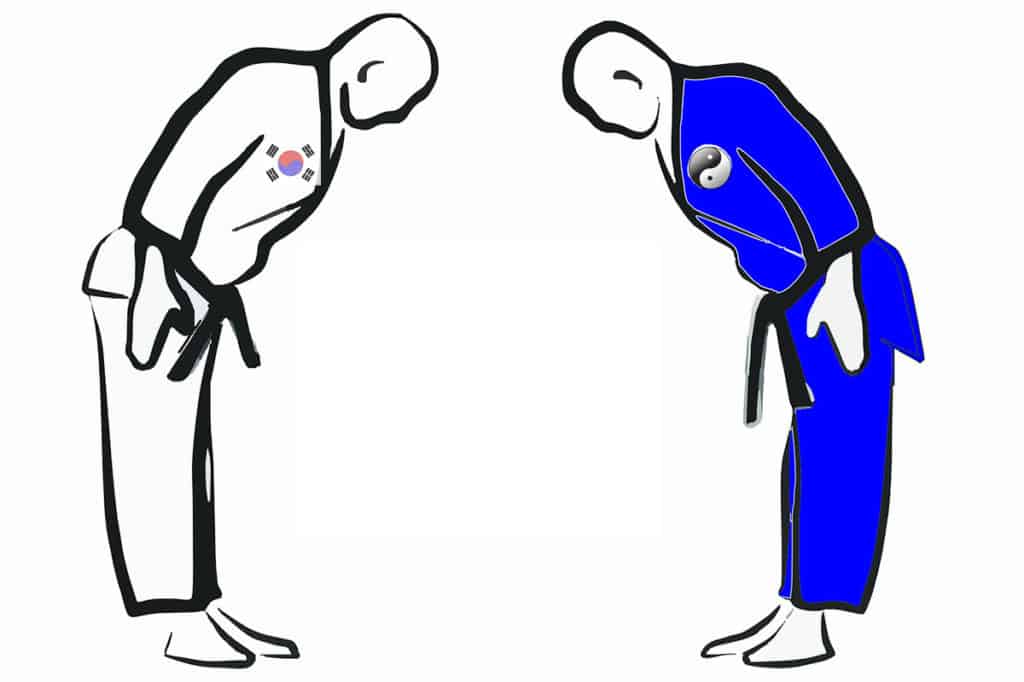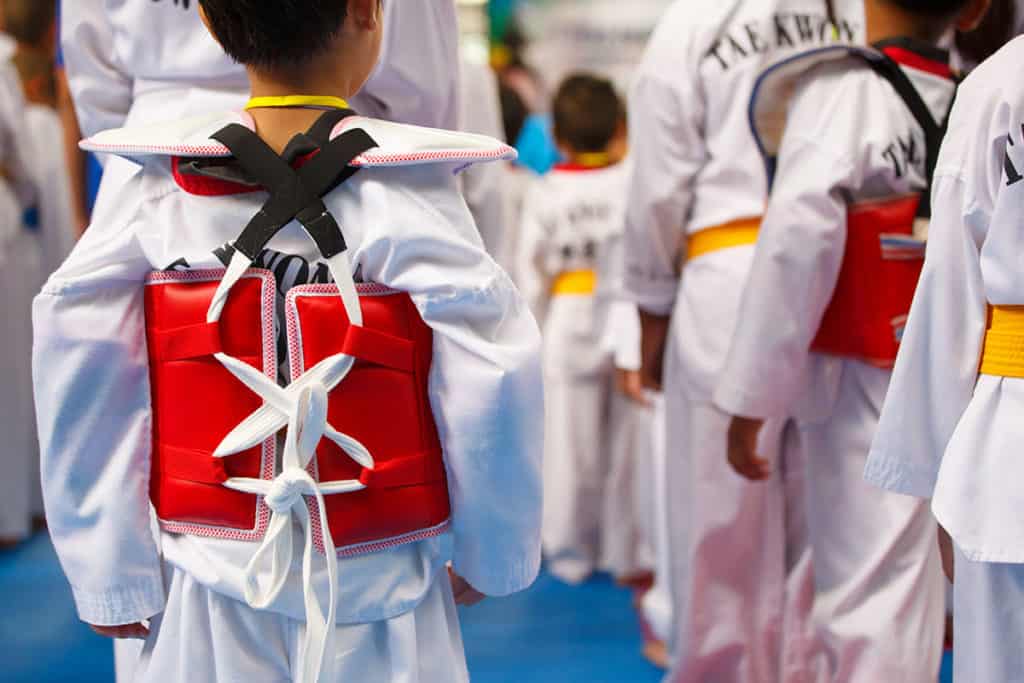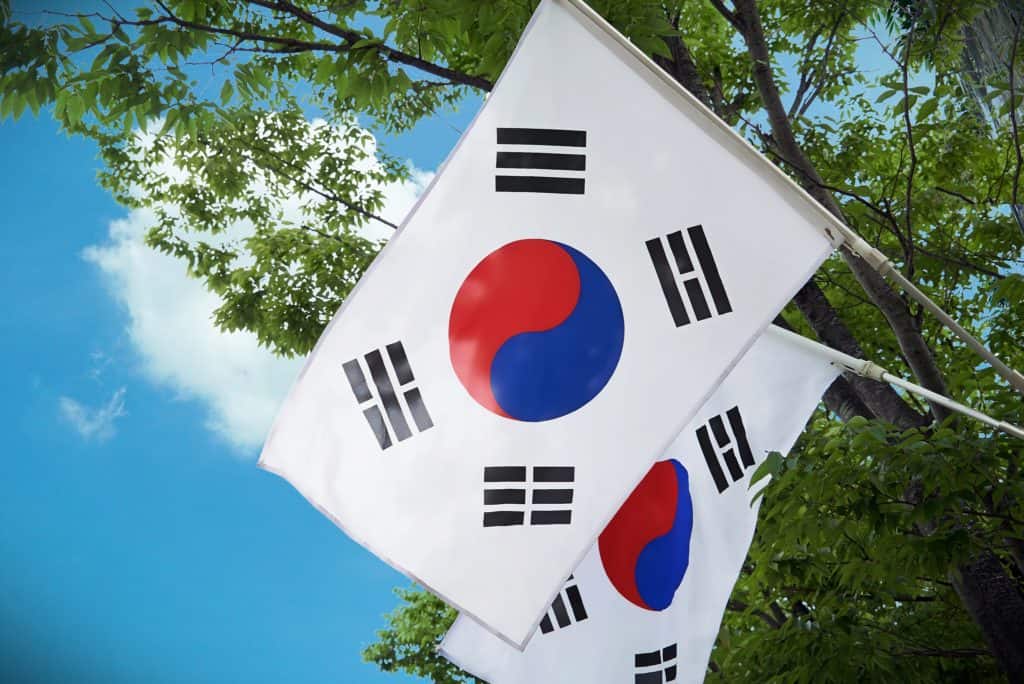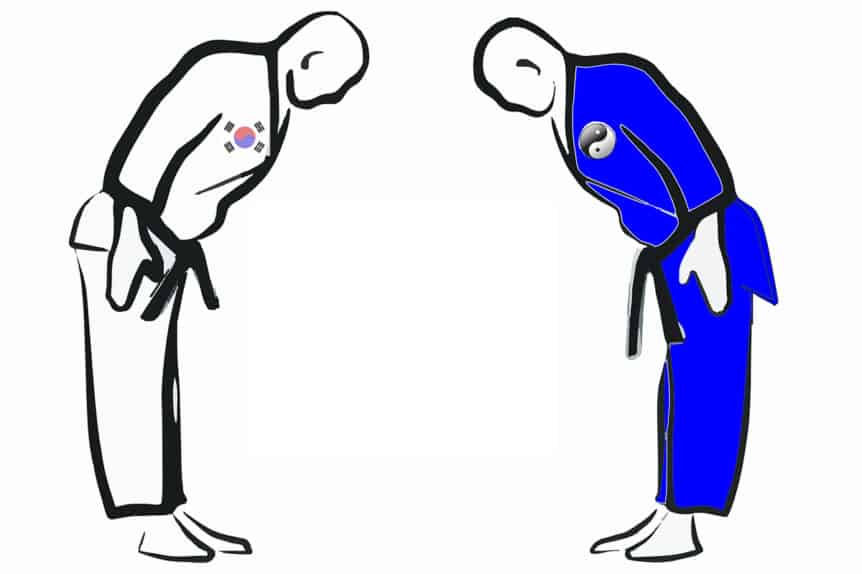
Many people, especially in the west, find bowing to be demeaning. It’s a sign of subservience to many, so not everyone is keen on practicing it. But in some cultures, bowing is not only the physical manifestation of respect, it’s also a sign of gratitude. In many of these cultures, bowing is also a substitute for a handshake. Such is the case in Taekwondo etiquette.
Why is their bowing in Taekwondo? When you bow in taekwondo to your teachers and your seniors, it’s a sign that you not only respect them and trust them, you’re also showing them gratitude for teaching you the art.
Today, let’s take a deeper look in taekwondo etiquette. More specifically, we’ll be looking at bowing, why we do it, how we do it and when we should or should not do it.
Why Do We Bow in Taekwondo?
Bowing in any martial art, including taekwondo is considered to be part of standard etiquette. It’s a sign of respect, not just to your teachers and seniors, but also to the Dojang, the place of practice, and the art itself.
If your teacher or senior bows in return, this means that they reciprocate this feeling of respect and gratitude. Respect that you were able to receive their teachings, and gratitude that you decided to train with them today. In simpler terms, bowing in taekwondo is the physical manifestation of respect, trust and gratitude.
How to Bow Properly in Taekwondo
Bowing is a very simple motion to do, but not many people can do it right. Some people, despite not being new to taekwondo, still don’t know how to bow properly at all. So, if you feel like you’re doing it wrong, don’t feel too bad about it. You’re in the Dojang to learn, after all.
When you do a standard bow, put your hands on your sides with fingers kept together, or in some variations, clenched into a fist. You should also keep both heels of your feet together. Touching your heels together will ensure that your hips are facing forward, and not relax too much, making for a straight and proper bow.
Next, for the bow itself. Start bending at the waist at a 30 to 40 degree angle. Make sure that you keep your body straight while you do this, and not bend your neck forward as you bow. Your shoulders should also be pulled back somewhat, whilst still keeping your back straight.
In many other martial arts, students maintain eye contact as they bow, which is meant to be a sign of readiness, in case their partner attacks them mid-bow. But in the case of taekwondo, you break eye contact as you bow.
This is a sign not only of utmost respect, but also of trust, that your partner is disciplined enough not to do anything rash inside the Dojang. You should be looking at the floor while you bow, or at your teacher’s or senior’s feet. Once the bow is done, simply straighten yourself up.
Sometimes, bowing may include greetings, such as “Good morning, sir” or “Good evening, sir”. This is mostly used when bowing to your head instructor or to visiting instructors.
Who You Should Bow to and When
It can be difficult to determine when the right time is to bow, especially so if you’re new to taekwondo. Some Dojangs encourage bowing in certain times, for example, whilst others are more relaxed on the matter.
That said, the best advice we can give you is you should observe your seniors and your teachers and follow their examples. Bow when they bow.
Here are some of the times you should bow in Taekwondo:
Your Seniors
When you meet your seniors for the first time in class, you should call their attention and bow to them. Seniors are the ones that outrank you. This is to signify that you are aware of their presence and also a good way to show them respect. You only need to bow to each of your seniors once during the entire training session. There’s no need to bow to them every time you see them.
Your Master Instructor
Your Dojang’s master should be shown the utmost respect every time. As such, bowing to the master instructor happens more often than you would bow to your seniors.
You bow to your master when they step into the dojang, and you also bow before you talk to them. Before and after any practice session, you will also have to bow to your instructor. Some schools may require you to bow lower than you normally would if you bowed to your seniors.
Before and After Drills
Before each drill or exercise, you will also need to bow to your training partner. After each individual drill, you should also give thanks by bowing.
Before and After Sparring

Before you get to sparring or before any competitive bout, you are required to bow to your opponent, the referees, and the judges. You may also be required to bow to your coach as well. After the bout, whether you win or lose, your will also have to bow to your opponent. Sore losers have no place in Taekwondo.
Bow to the Dojang
You are also required to bow before entering the Dojang and before leaving it. This is to signify respect and gratitude towards the place of training. The Dojang is also a physical manifestation of the art of taekwondo itself, so showing respect to the Dojang shows respect to the martial art by extension.
When Not to Bow
Now that you now when the best time to bow is, let’s familiarize ourselves when it’s best to not bow in taekwondo. In taekwondo etiquette, when not to bow is a lot more flexible than when it’s required to bow. Here are a few examples:
Meeting Seniors or Instructors Outside the Dojang
You’re not required to bow to your seniors or instructors when you meet them outside of the Dojang. If you are both in uniform though, you should bow to them. If your senior or instructor does initiate a bow, even when they’re not in the Dojang or are not in uniform, it’s proper etiquette to return the bow yourself.
If You’re a Senior
Usually, when you are of a higher rank, you don’t have to initiate a bow to your juniors. If, however, you notice some of your juniors not initiating bows when they meet with their seniors, never initiate the bow yourself. Instead of bowing, correct your juniors instead. Such is the duty of being a senior in taekwondo.
During Informal Gatherings
If you’re inside the Dojang, but are not in training or in uniform, say your school is hosting a party, then you’re not required to bow to your seniors or instructors. If they do initiate a bow, it’s good manners to return it. Some schools, however, still require you to bow whenever you’re in the Dojang, regardless if it’s an informal gathering or not. Again, when in doubt, follow your senior’s example.
Why Do We Bow to The National Flags?

Although it’s not as widespread as before, many taekwondo schools bow to the Korean flag, as well as the flag of the country where it’s being practiced, if it’s present. We bow to the Korean flag because taekwondo originated in Korea. Bowing to the flags isn’t a form of nationalism, but rather an extension of respect to the art itself, by showing respect to taekwondo’s birthplace.

